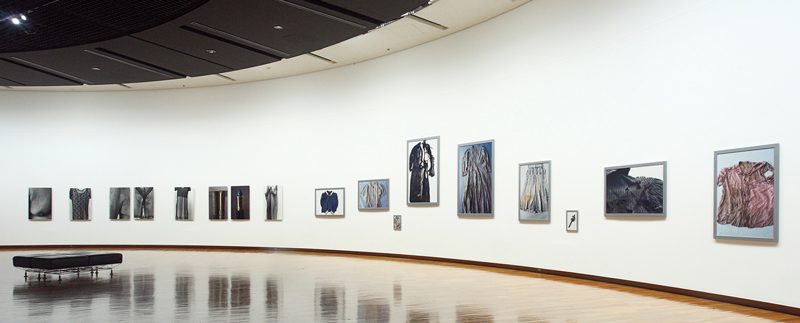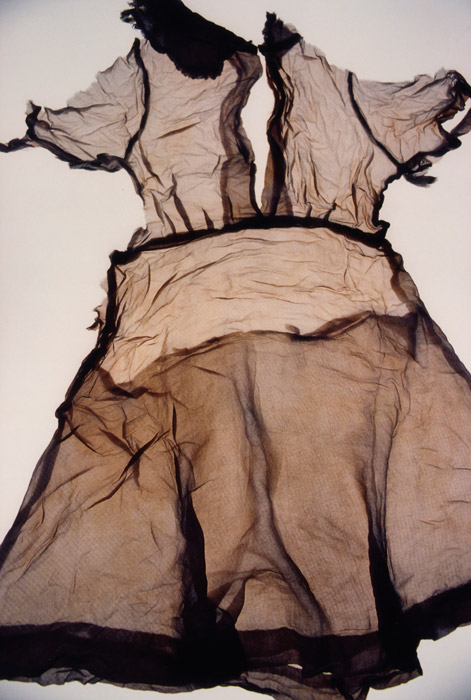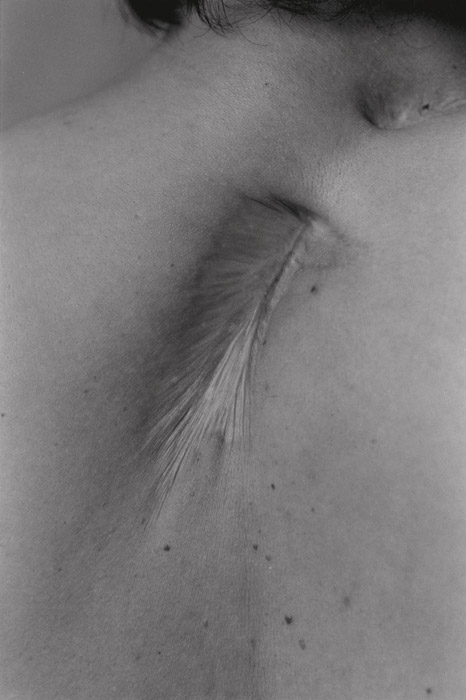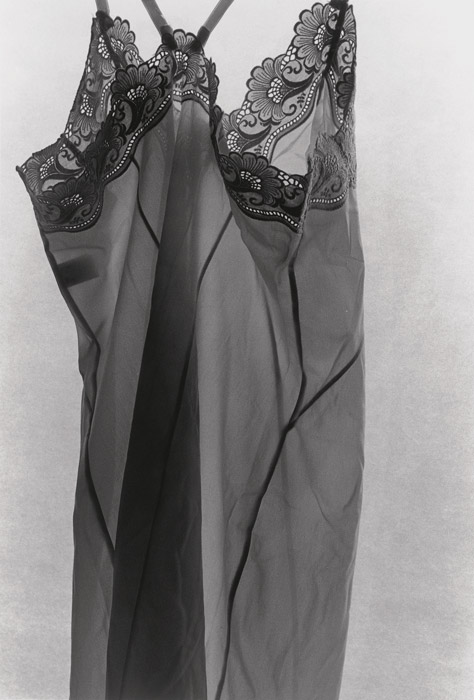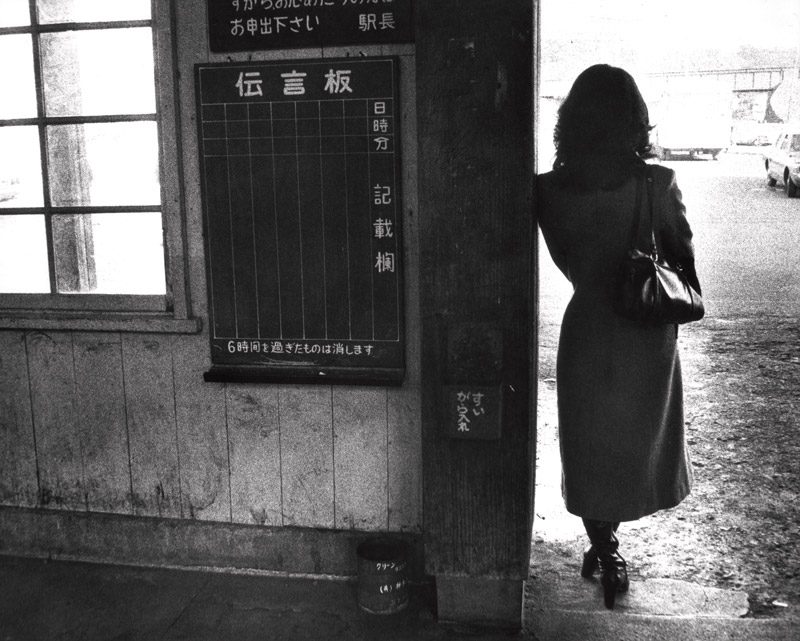Active since 1975 as a fiercely independent photographer in her native Japan, Ishiuchi Miyako has at last achieved significant recognition on the North American art scene.1 Ishiuchi Miyako 石內都 : Postwar Shadows, her recent retrospective at the J. Paul Getty Museum in Los Angeles, provided strong evidence of her reputation as the most prominent female Japanese photographer and the equal of the best of her male counterparts.2 This exhibition was the first in North America to survey the breadth of her ongoing career.
Ishiuchi’s rise on the global stage progressed slowly, and for the first thirty years her work was featured internationally mostly within group exhibitions devoted to Japanese photography.3 She was given solo exhibitions in commercial galleries in New York in 1994 and 2003, but it was not until she represented Japan at the 2005 Venice Biennale that she first garnered international acclaim within the broader art community. On view at the Japanese Pavilion were intimate images from her Mother’s series (2000–05), which consists mainly of evocative close-up details of the personal effects, including lacy undergarments, clothing accessories, lipstick, and dentures, left behind when her mother died in 2000.4 Although Ishiuchi – whose birth name is Fujikura Yoko – had not always been close to her mother, she adopted her maiden name to represent herself professionally when she first exhibited in 1975, a gesture of artistic self-invention eluding easy interpretation.5 Be that as it may, the moving Mother’s memorial engrossed many in Venice.
In turn, the showing of Mother’s a year later at the Tokyo Metropolitan Museum of Photography led to a commission to photograph A-bomb artefacts at the Hiroshima Peace Memorial Museum, which Ishiuchi had never visited. Having studied weaving as an art student, she became fascinated with the women’s garments, especially those, as she explained, “that had been indirect contact with the victims’ bodies.”6. Struck by the vital signs still palpable in these items, Ishiuchi “gasped in admiration at the beauty of their vivid colors and textures, their flaws and complicated detail.”7 Scrutinizing these “summer outfits” from different distances, including extreme close-ups, Ishiuchi photographed them in colour either by reflected light, to emphasize the tactility of the textured materials, or by transmitted light, to infuse them with a heightened sense of intimacy and a tinge of life. The resulting project, titled ひろしま/hiroshima, which is still ongoing today, was first displayed to great effect in 2008 at the Hiroshima City Museum of Contemporary Art.8
Three years later, following four other presentations of this seminal work in Japan, the Museum of Anthropology at the University of British Columbia in Vancouver became the first foreign institution to mount a major exhibition of these highly charged images. Featuring forty-eight prints of different scales hung at different heights, this installation became the subject of Linda Hoaglund’s enthralling documentary film Things Left Behind (2013), which further broadens the audience for Ishiuchi’s work.9
Perhaps the most consequential event to affirm Ishiuchi’s growing recognition on the international scene is the prestigious Hasselblad Award that she earned in 2014 from the renowned Swedish foundation. The accompanying exhibition and catalogue brought together seven bodies of work produced over the last twenty-five years, including ひろしま/hiroshima and Mother’s.10 In addition to reproducing the exhibition content, the catalogue includes an introductory essay tracing Ishiuchi’s early work of the late 1970s, the so-called Yokosuka trilogy.11 Thus, this publication represents the first major survey of the artist’s work to appear in the West. To mark the award, two further lavish publications,12 both dedicated to ひろしま/hiroshima, were issued to add to Ishiuchi’s already bountiful bibliography, which now tallies more than thirty monographs.
By the time the Hasselblad Award committee made its recommendation, the J. Paul Getty Museum had already laid the foundations for its own retrospective. That these surveys should occur within a year of each other confirms that the critical discourse surrounding Ishiuchi’s prolific career was ramping up in the Western hemisphere.13 The Getty Museum embraced a curatorial strategy not unlike that employed by the Hasselblad Foundation. The exhibition curator, Amanda Maddox, conceived an overview structured around nine distinct, though conceptually related, bodies of work in order to convey the depth and coherence of Ishiuchi’s career. Of these nine series, only three were represented in both exhibitions, each of which succeeded in conveying the essence of Ishiuchi’s practice.
The Getty presentation stood out for the inclusion of the early Yokosuka trilogy (1976–81), three angst-ridden sets of grainy black-and-white images, each with its own publication, that had signalled Ishiuchi’s initial appearance in the male-dominated Japanese photographic community.14 Having grown up in the shadow of the American naval base dominating Yokosuka, she returned in her late twenties, following a stint as an art student in Tokyo, to confront the traumatic memories of her past. The resulting images, dark, sometimes off-kilter, and emotionally laden, laid bare her wounded soul, the recollections of her fearful youth, and her resentment of the social inequities of the post-war period. A similar style informed her airless – if not claustrophobic – pictures of cramped apartments and former brothels making up the second and third components of the Yokosuka trilogy.
After she tamed her Yokosuka demons, Ishiuchi took several years to reconfigure her photographic aesthetic toward the frag-mentary depiction of the human figure confronted with an inescapable sense of vulnerability. In 1•9•4•7, began in 1987 and released in book form in 1990, Ishiuchi photographed the no-longer-flawless hands and feet of female subjects born the same year as she was.15 For Body and Air (1999), which formally differs from but thematically echoes 1•9•4•7, she composed minimalist portraits by arranging four, five, or six SX-70 fragments of heads, navels, buttocks, hands, and feet to suggest standing figures.
Imbued with a sense of intimacy similar to that in 1•9•4•7, Scars, a decade-long series published in 2005, documents in a quasi- forensic manner scores of scars affecting women’s bodies, which are only identified by the causes of their infliction and the dates of their occurrence, as in Scars #27 (Illness 1977) or Scars #46 (War 1945). Although only one image harkens back to 1945, the whole project brings to mind the memory of lacerated A-bomb victims and the hibakusha traumatized by unsightly keloids. Hence, it is perhaps no coincidence that the exhibition closes with stunning displays of Mother’s and ひろしま/hiroshima, which bring the harrowing journey of the wounded – and the dead – full circle by reminding us that spirit lives on in what remains.
• • •
For those fortunate to have seen Postwar Shadows, the Getty also had on view a companion exhibition titled The Younger Generation: Contemporary Japanese Photography. Designed to draw attention to Ishiuchi’s far-reaching feminist influence, this smaller exhibition, installed in adjacent galleries, featured the work of five highly talented female artists: Onodera Yuki, Shiga Lieko, Kawauchi Rinko, Sawada Tomoko, and Otsuka Chino. Given the difficulties that women aspiring to professional and art careers have traditionally experienced within Japanese culture, it is noteworthy that a gender-neutral title was chosen for this show, as no male artist was included.
2 Ishiuchi Miyako 石內都: Postwar Shadows, with the companion exhibition The Younger Generation: Contemporary Japanese Photography, could be seen at the J. Paul Getty Museum October 6, 2015–February 21, 2016.
3 The most complete chronology of Ishiuchi’s work can be found in the catalogue accompanying the Getty exhibition. See Amanda Maddox, Ishiuchi Miyako 石內都: Postwar Shadows (Los Angeles: J. Paul Getty Museum, 2015), 177–87.
4 Ishiushi’s Venice Biennale exhibition, on view June 12–November 6, 2005, was titled Ishiuchi Miyako: Mother’s 2000–2005: Traces of the Future.
5 For further discussion about this name change, see Maddox, Ishiuchi Miyako, 20–21 and 126.
6 Ishiuchi Miyako, ひろしま/hiroshima (Tokyo: Shueisha, 2008), 76.
7 Ishiuchi Miyako, “Summer Outfits,” insert to exhibition pamphlet, ひろしま/hiroshima: Strings of Time (Hiroshima: Hiroshima City Museum of Contemporary Art, 2008).
8 Ishiuchi purposely chose the combination of hiragana and r-omaji characters to title the project ひろしま/hiroshima. A form of writing favoured by Japanese women in former times, hiragana connotes a feminist perspective, which can also be seen in the artist’s preference for artefacts that have belonged to women. See Maddox, Ishiuchi Miyako, 11. Similarly, it is the artist’s preference to write “hiroshima” in lowercase within the context of this series.
9 See Roland Kelts, “The Details of Hiroshima,” The New Yorker (August 6, 2013), http://www.newyorker.com/culture/culture-desk/the-details-of-hiroshima. See also Linda Hoaglund, “Behind Things Left Behind: Ishiuchi Miyako,” Impressions: The Journal of the Japanese Art Society of America, no. 34 (2013): cover, 85–95.
10 Dragana Vujanovic and Louise Wolthers (eds.), Ishiuchi Miyako: Hasselblad Award 2014 (Berlin: Kehrer, 2014).
11 See Christopher Phillips, “Ishiuchi Miyako: Beginnings,” in Louise Wolther (ed.), Ishiuchi Miyako: Hasselblad Award 2014 (Berlin: Kehrer, 2014), 9–15.
12 The obi wrapped around From ひろしま/hiroshima (Tokyo: Kyuryudo, 2014), which adds to the earlier published collection newer images made as recently as 2014, specifically states that it was published “upon receiving the 2014 Hasselblad Award.” The second publication, Here and Now: Atomic Bomb Artifacts, ひろしま/hiroshima 1945/2007 (New York: PPP Editions, 2014), accompanied the first exhibition of this body of work in the United States, at the Andrew Roth Gallery in New York (the entity behind PPP Editions), September 18–November 21, 2014. Limited to one hundred copies, this limited edition retails for USD650, further evidence of the artist’s current professional standing.
13 See, for instance, Mitsuda Yuri’s interview with Ishiuchi Miyako published in Aperture 220 (Fall 2015): 122–35.
14 The Yokosuka trilogy is composed of Yokosuka Story (1976–77, published 1979), Apartment (1977–78, published 1978), and Endless Night (1978–80, published 1981). Also included in this opening section of the Getty retrospective were a few later images from Yokosuka Again, 1980–1990 (1998) and the series EM Club (1990), together with the video good-by EM CLUB (1993) and display cases with pertinent publications and other artefacts.
15 Selections from 1•9•4•7 were also on view in the exhibition organized by the Hasselblad Foundation.
Claude Baillargeon is an associate professor of art history at Oakland University, Rochester Hills, Michigan. He received his MFA from the School of the Art Institute of Chicago and his PhD from the University of California, Santa Barbara. He currently serves as vice-chair of the Society for Photographic Education (SPE).

